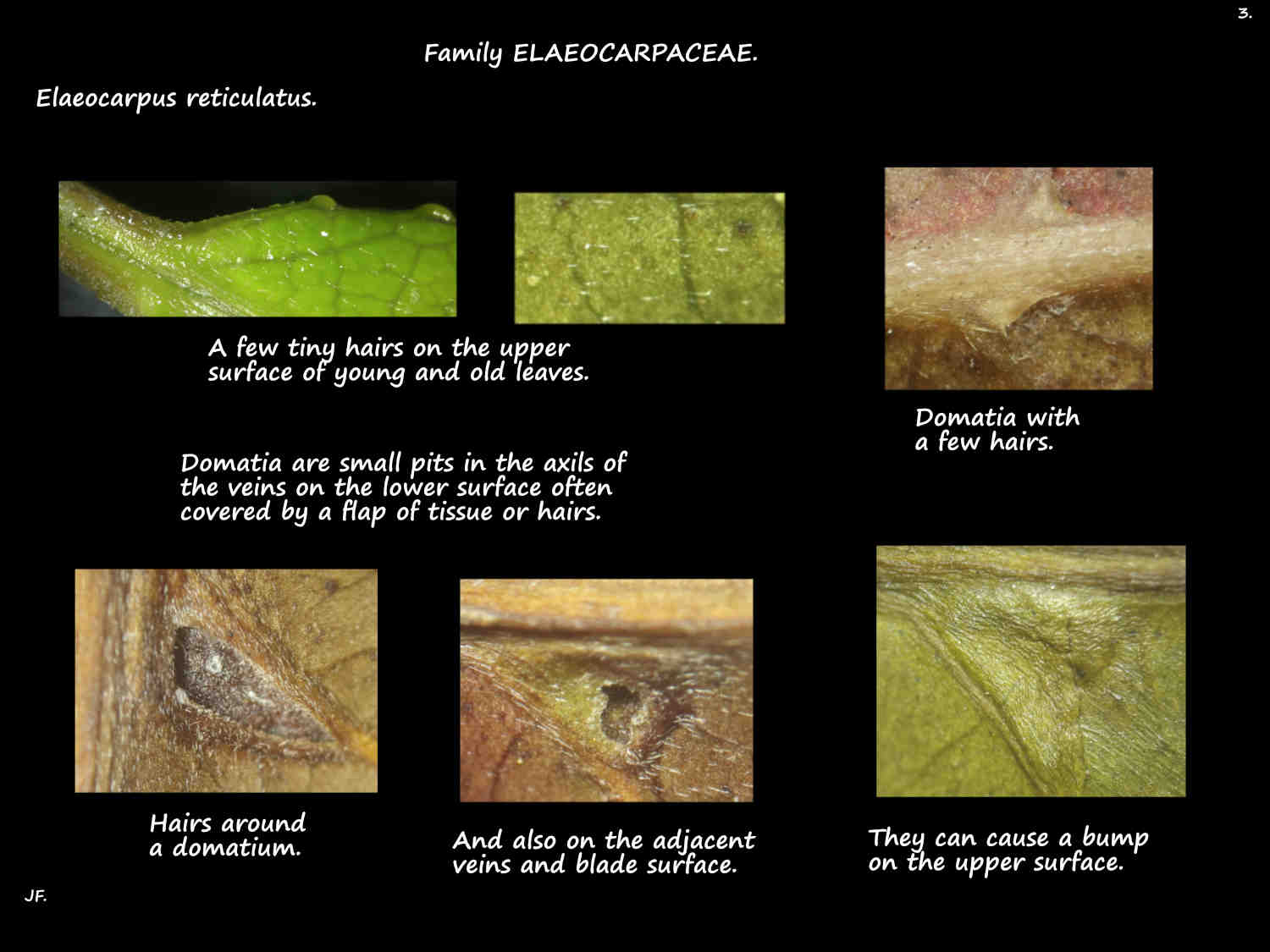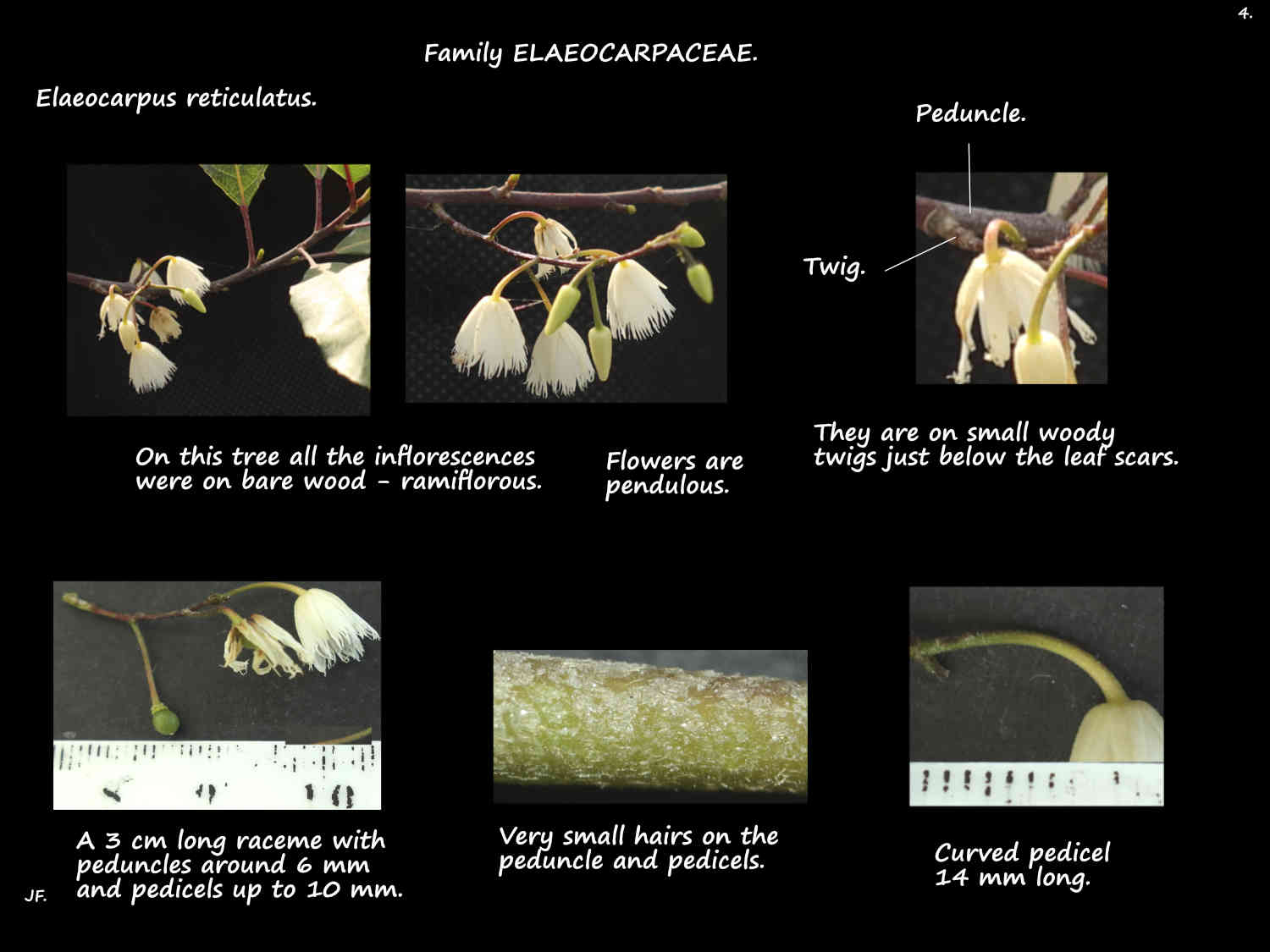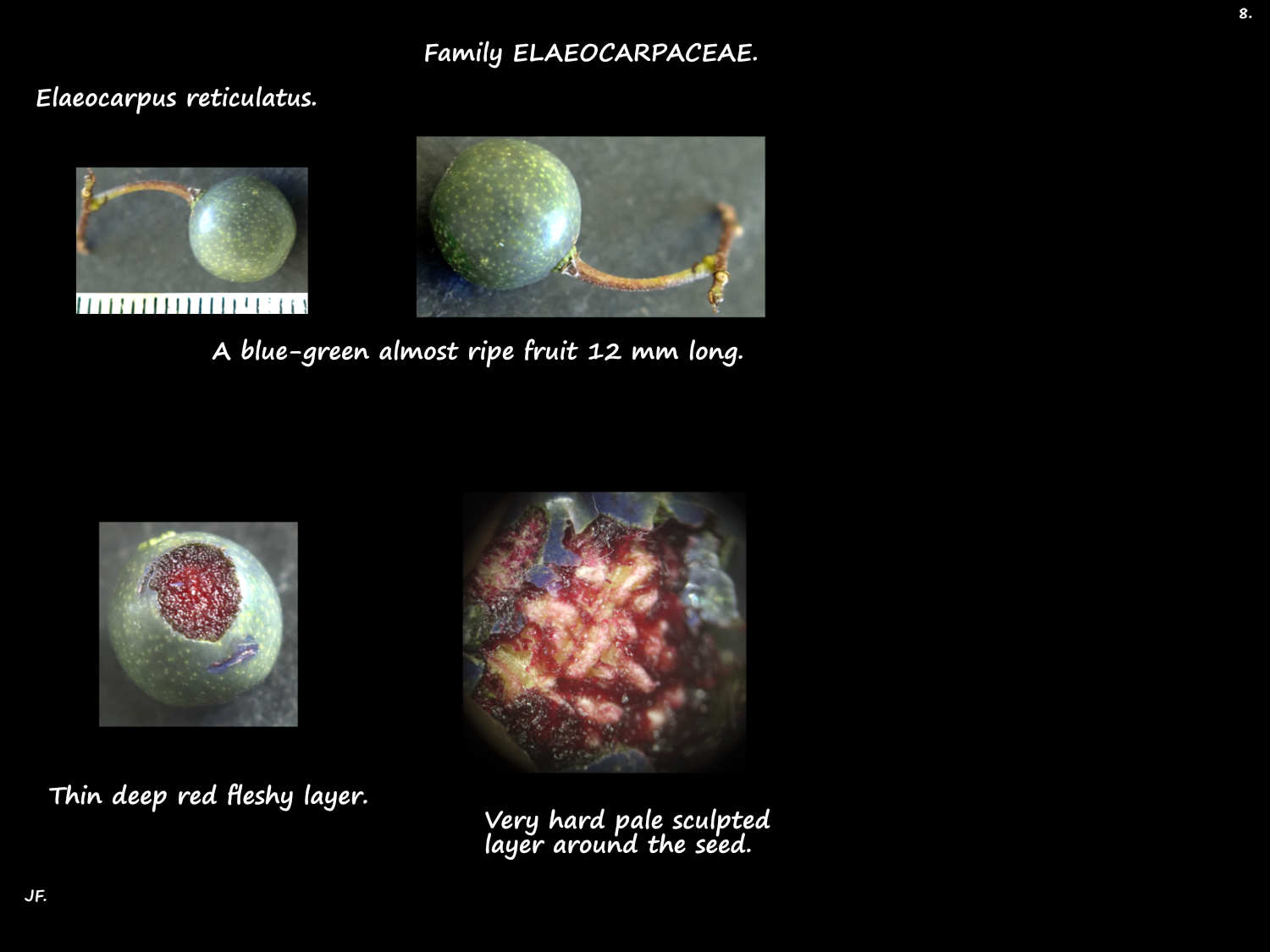In Family Elaeocarpaceae Blueberry Ash is found along the Queensland coast.
It is also commonly known as Ash Quandong or Blue Olive berry.
It can be seen as a shrub around 2 to 3 m high or a small tree up to 10 or 15 m.
They have a roughly conical shape with a narrow base.
On large trees the trunk may have buttress roots.
Plants can sucker from the roots forming a thicket of small trees.
The smooth or wrinkled brownish-grey bark has lenticels (nodules).
Old stems have scars from the fallen leaves and the inflorescences below them.
New twigs may have some hairs.
The alternate leaves are on a petiole up to 2 cm long.
At the base are 2 brownish stipules that may fall off early.
The elliptic blades are mostly 5 to 10 cm long but they can be up to 15 cm.
They are 1 to 3 or 4 cm wide with a pointed tip and a wedge-shaped base.
The edge is toothed and the small veins are prominent on both sides.
Young leaves may have some hairs and the lower surface has domatia in the vein axils.
The domatia are small pits or pockets with some hairs.
Old leaves turn red before falling.
Inflorescences can be among the leaves or on bare stems.
In either position they are on small twigs below the petioles or old leaf scars.
They are racemes with flowers opening from the base of the stem first.
Flowers are on a pedicel 4 to 8 mm long that has a tiny bract at the base.
Racemes up to around 8 cm long can have up to 10 pendulous flowers.
The raceme midrib and the pedicels have tiny hairs that gradually disappear.
The calyx has 5 very narrow free sepals around 5 mm long.
They are an almost translucent pale white.
There are tiny hairs on the edges and a few scatted on both surfaces.
The bell-shaped flowers have (4) 5 free petals.
White petals, under 1 cm long have short hairs.
The tips are fringed with up to 10 or 12 (15) narrow lobes.
Some petals have a pink tinge.
Inside the base of the petals are the smooth yellow nectary lobes.
Internal to these are (13) 15 to 25 free stamens.
The 1 to 1.5 mm long filaments have tiny hairs.
The slightly longer oblong anthers open by an an apical pore that extends a short distance down either side forming 2 short lips.
On the lip nearest the petals is a nearly 1 mm long awn with minute hairs.
The smooth superior green ovary has an apical style around 3 mm long.
The almost spherical drupe-like fruit are around 1 cm across.
Under the bright blue skin is a thin green fleshy layer with a lot of fibrous tissue.
Enclosing the seed is a very hard woody layer that has a series of nodules, ridges and grooves on it.
Fruit ripen from green to blue then grey-blue or almost black.
They stay on the tree for around a year.
The drupe-like fruit have 1 or more seeds.
J.F.












